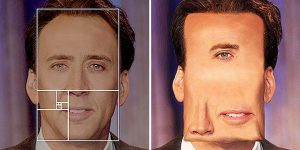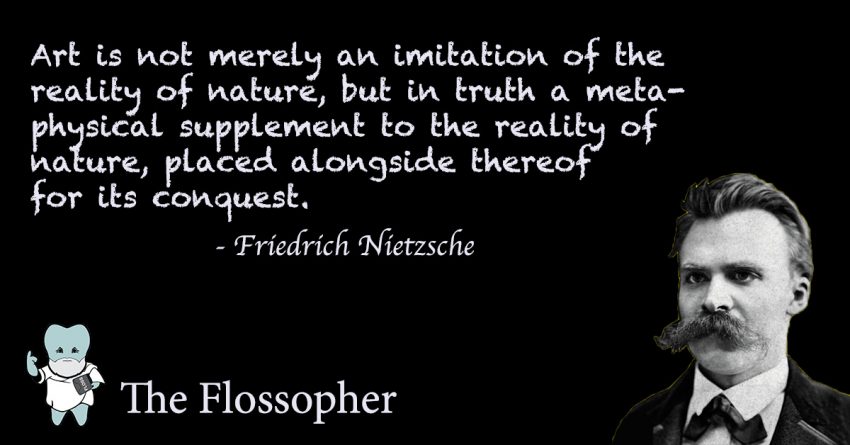What Does Smile Design Have to do with Philosophy?
Simle design makes dentistry an artistry but also a philosophy. Questions asking what is beautiful are metaphysical questions (read about metaphysics here). Metaphysical questions are those concerned with the nature of reality when it comes to abstract ideas or concepts. The idea of beauty is not something physical one holds in her hand. Metaphysical analysis searches for an expression of beauty as an universal principle that explains why other things are beautiful to us. In dentistry, we are concerned with what is the ideal facial profile, most esthetic color of teeth, and overall smile design.
The biggest obstacle to determining an objective theory of beauty is its subjective nature. Different people find different things beautiful or repulsive. They even change their minds based on current trends, life experiences, etc. You might find a patient’s gold inlay to look really nice, but the patient wants to replace it with a white colored crown. Beauty is in the eye of the beholder, so they say. If even the beholder can later change her mind, their their esthetic judgment was originally just an opinion.
People can have different opinions, but this does not mean there are no objective answers. Abe says the earth is flat, Bae says the earth is round. This does not mean the earth has no objective shape; Abe is obviously wrong. There are a myriad of theories trying to answer what is beauty and make life for dentist easier. This article will review the most relevant for dentistry.
Naturalistic Theories of Simle Design
Naturalism is the idea that truth is determined by some fact in the external world. Beauty is not determined by how humans feel but some natural order of the universe. Theorists might say symmetry, simplicity, or some formal aspect guides proper smile design. Some might appeal to abstract cognitive values or its apparent presence in nature.
Formalism

The distinction between form and matter is an ancient one. Aristotle stipulates that matter is the content or composition of a thing and form is the arrangement or organization of that content. Teeth are made from hydroxyapatite but having mamelons is a formal aspect.
Kant was the first to promote formalism. This is the idea that beauty is found in the formal characteristics of a thing. For Kant, a painting is just as beautiful in black and white as it is in color. The artistic quality of a smile is judged by formal aspects such as symmetry with face, size and shape of teeth, etc.
Judging a simle by its formal attributes makes a dentist’s job easier because these are things we can objectively measure. We can measure the length of a central incisor to be 10.5 mm, but it is very difficult to quantify the feminineness of a smile. There is much research in cognitive psychology demonstrating subconscious preference for facial symmetry, certain proportions, etc. The problem with limiting ourselves to formal criteria is that we reduce art to what is merely measurable. Most of us appreciate art for its ineffable qualities (how it makes us feel), not the presence of imbrication lines on a composite veneer.
Review of Formal Aspects
Christine M. Korsgaard breaks down Aristotle’s idea of form into (1) shape or contour, (2) ratio or recipe, and (3) function or mechanism (read it here). Most dentists are familiar with the importance of symmetry and the golden ratio, but don’t necessarily view function as an esthetic quality. Korsgaard explains that a thing’s function is not what it does, but how it does it. People use teeth to eat or smile but can only do so when the teeth are in good health. The idea is that a beautiful smile is one that is also healthy.
Symmetry
The shape or contour of a tooth is the surface outline in 3D space. While a sphere would be the most simple and symmetrical 3D shape, it would not be the form of a human tooth. 3D symmetry might be a standard of beauty in sculpture. However, it does not apply to smile design because teeth, gums, and lips have unsymmetrical shapes.
Humans do have bilateral symmetry in the sagittal plane. The upper right central incisor should match the left one but not the lower one or a posterior tooth. Symmetry has been show by cognitive psychologists to be one important subconscious consideration people have in evaluating esthetics. The human body also appears to develop this bilateral symmetry through genetically encoded markers.

Symmetry in nature is paradoxical, however. While nature seems to obey mathematical patterns, perfect symmetry does not exist in nature. Ours eyes, ears, etc. are not level, nor even the same size. Adding some crowding or a gold tooth to one side of a denture can introduce symmetrical imperfection and make it look even more natural. Esthetic judgments of a person may involve considerations of symmetry because nature seems to follow symmetrical rules. If we want to follow nature, perfect symmetry should not always be aimed for in dentistry.
While symmetry is a simple concept to understand, it is not the universal principle for human beauty. Symmetry is only one factor in esthetic smile design.
Ratio
Dentists taking portrait photographic of patients are familiar with the rule of thirds. One ignores bilateral symmetry to add character to a photograph. There are many other ratios that people claim to be esthetically pleasing on the human face. Instructors of smile design often introduce students to the concept of the golden ratio (1.618).
Pythagoras, metaphysician and mathematician, thought that everything in reality was reducible to numbers. It would then only make sense to the greeks that beauty would also express itself in number. Greek architecture (e.g., Partenone) and greek sculpture (e.g., Athena Parthenos by Phidias) sometimes follows the golden proportions. The problem is that most humans do not actually follow anything close any consistent set of proportions.

Ratios are not averages derived from empirical observation but mathematical speculation. The appeal of the esthetic ratios seem, however, to be founded in superstition and cult following throughout history. Ratios have mathematical intrigue and are imposed upon objects of nature as esthetic ideals. People would look very funny to us if they actually resembled famous greek sculptures.
Function
Every dentist understands that oral health is required to maintain cosmetic dentistry longterm. It is a different concept altogether to consider health as beauty itself in dentistry. Would a healthy TMJ joint on a CBCT scan be beautiful? In dermatology, healthy skin is certainly prettier than infected skin. Athletes, those most physically fit and in peak performance, tend to be considered more beautiful by western standards. In vascular medicine, varicose veins can be harmful and esthetically displeasing.
Beauty is an ideal or perfection of a thing’s from. Aristotle considered the form of a thing (its genus or kind) to be the essential aspect of its identity (“being”). If wood is in the form of a chair, it is a chair. If wood is in the form of a desk, it is then a desk. Since beauty is an ideal a thing must achieve to be called beautiful and a thing must be the ideal form of itself to be the kind of thing it is at all, things are beautiful when they have formal being.
Shape cannot be the aspect of form that makes a thing be a tooth because teeth vary in shape. They also vary in proportions. All teeth, however, need to be in good health to be teeth at all. A broken or infected tooth soon requires reconstruction to bring it back to form.
If function or health is the aspect of form that determines a thing’s identity or being, health is an ideal or perfect a thing tries to achieve to be a thing at all. Since beauty is a type of perfection of a thing’s form, you are most beautiful when you are true to yourself and when you are healthy.
Normative Theories of Simle Design
An issue with naturalistic theories is that they are too metaphysically abstract. It is sometimes not clear how beauty in general is applicable to beauty in humans. Normative theories of beauty involve forming ideals from empirical averages or meaningful standards. The appeal in normative theories is that they are more scientifically verifiable and culturally relatable.
Scientific Averages
You forgot to take a patient’s shade for a posterior crown and they don’t want to come back for shade section. You of course go with Vita shade guide A2. This is because most surveys show that the average (or “normal”) shade is A2 in young adult males and females. Metaphysical speculation cannot tell you the average shade. This requires empirical survey.
Scientific surveys come in handy in certain situations when there is lack of information. In full mouth reconstruction of a wear case, knowing that a young central incisor is usually around 10.5 cm gives a good starting point for opening the bite. Norms can serve as starting points when you have nothing else to go off of, but other factors come into play.
The issue with using averages is that not every one is average or wants to be average. In one survey, Americans by age 50 have lost an average of 12 teeth. Should I tell my 50 year old patient who has 28 teeth that he needs 8 more extracted to be normal? Of course not! Many of these surveys done at universities historically involved only young, white males with high socioeconomic status. People of other races, genders, etc. did not participate in those studies. There is still such disenfranchisement in medical and dental research. Using outdated esthetic averages is a big violation of racial justice in orthodontics and orthognathic surgery.
Youthful and Natural Appearance

Being young and more natural looking are associated with being beautiful. Flat incisal edges are caused by age-related wear can often look displeasing. Super white crowns can look like chiclets and are considered non-esthetic.
Youthfulness, naturalistic, etc. are abstract concepts not qualifiable but they are meaningful to patients. Patients are not first concerned with the lose of incisal translucency or golden ratios. Different patients focus on different normative criteria. Some have crowding and want straight teeth, some are missing and want to look like others, and some have chiclet crowns and want to look more natural.
What is most important to a patient might not always be quantifiable or effable to a dentist. Formal aspects of beauty are understood, but what matters (pun intended) in esthetic judgment is only felt. Meaningful esthetics therefore involves objective formal criteria and intersubjective communication of meaningful content between the patient and the dentist.
Gender and Racial Norms
Normative criterion bring up ethical issues in our discussion of dental esthetics. Beauty standards have gender and racial biases. In most societies today, a just person fights against patriarchy and white supremacy. Healthcare professionals must be aware of exploitation and subjugation of genders or races.
Gendered esthetic language is common in prosthetic treatment planning when it comes to smile design. We learn in dental school that rounded teeth with curves and more apically positioned laterals are more feminine. Flat incisors, sharp edges, and bigger teeth are more masculine. Gender norms for teeth come from gender norms for physique. Woman have higher body fat percentage and are shorter so are generally curvier, smaller, and are more valued when younger. For men, muscles give definition, men are usually larger in size, and age is a sign of maturity or wisdom.
Orthognathics has a dark history. Measuring skulls was a way of differentiating racial groups and promoting eugenics. Skulls from whites were used as the standard. Instead of finding applicable clinical uses, much of facial profile criteria is outdated since trends constantly change based on region. Clinicians should be aware of racial generalizations such as jews have long noses and blacks have full lips. How to react to gender or racial stereotypes and their intersections in dentistry is a vast topic and cannot be covered in this post.
History and Cultural Context
In recent philosophy, Hegal and Marx have stressed the importance of historical and cultural context in all aspects of inquiry. Many artists recognize that art is living and is the experience of art is dependent on environmental context, the state of the perceiver, and historical or cultural events. This perspective is highly relevant to cosmetic dentistry.
Being aware of environmental context can be as simple as realizing that the color of lipstick the patient wears affects shade selection. Priming the patient with reasonable expectations can make the difference between accepted and rejected prosthetic dental work. Lastly, dental professionals have to be sensitive to historical trends (metal restorations are currently out of fashion) and even social issues involving gender and race.
Art is alive. Being an art, dentistry must be practiced by professionals that are constantly learning and communicating with their patients. Dentists can learn different objective criteria, but smile design still remains an active dialog between the patient and the dentist. The dentist educates the patient about the form and matter of esthetic smile design and works with the patient to achieve a “perfect” smile.
Take Away
Smile design is a complex philosophical topic. Metaphysically, beauty is a perfection or ideal a subject strives to achieve. It is divided into form and matter. Symmetry and function/health are formal aspects that objectively help us to design an esthetic smile. Golden ratios/proportions and empirical surveys help dentists and lab technicians only get to a starting point when patient data is limited. However, dentists need to also communicate with the patient to determine what things really matter. Treating patients like regular humans, not just teeth, opens a cometic dentist to different esthetic norms. A good cosmetic dentist is ethically conscious about esthetic norms.
Only by recognizing formal and material aspects of a beautiful smile can a dentist provide objectively beautiful work and co-subjective appreciation from the patient. Cosmetic dentistry is a living art from. Dentists need to pay attention to historical and cultural factors in their area of practice and keep an open dialogue with patients. Education and communication are key to successful smile design.
Author
Dr. Vishnu Burla, DDS, BA Philosophy

Facebook Comments